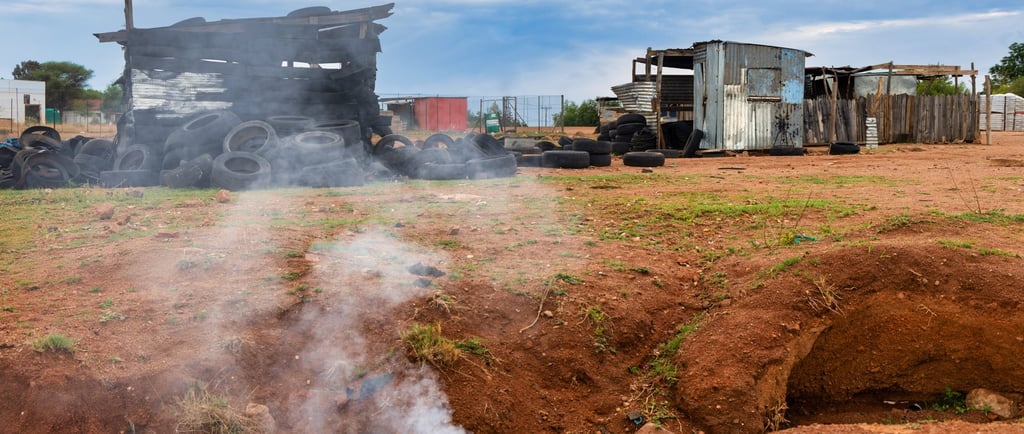Community & Conscience: The Social Impact of Tire Pyrolysis on Corporations
THE STORIES
TYROIL
6/19/20254 min read


In a small town nestled beside a sprawling, unsightly tire dump, the air hung heavy with the smell of stale rubber and the unspoken anxieties of its residents. Children played in dusty yards, their parents worried about the health impacts of the nearby waste, and economic opportunities felt as stagnant as the water collecting in discarded tires. This was the reality for many communities burdened by waste tires. But then, a new story began to unfold – a story of transformation, not just of waste, but of lives and livelihoods, driven by the quiet revolution of tire pyrolysis. This is the social impact of tire pyrolysis, a powerful testament to how corporations, through sustainable practices, can become true partners in community well-being.
The Social Pillar of ESG: Beyond the Balance Sheet
For corporations, the "S" in ESG, the social pillar, is about understanding and managing their impact on people – their employees, customers, suppliers, and the communities in which they operate. It encompasses a wide range of considerations, from fair labor practices and diversity to product safety and community engagement. A strong social performance isn't just about being a "good neighbor"; it's increasingly recognized as a driver of long-term business success, enhancing reputation, attracting talent, and fostering stakeholder trust [1].
For the company that decided to build a tire pyrolysis facility near that struggling town, the social impact was profound and immediate. It addressed critical community concerns that traditional waste management had failed to resolve.
Jobs, Health, and Opportunity: A New Dawn for Communities
The most direct and tangible social benefit of a tire pyrolysis facility is the creation of local jobs. From the collection and sorting of waste tires to the operation and maintenance of the plant, and the distribution of the recovered products, a new industry emerges, providing stable employment opportunities for residents [2]. This influx of jobs can revitalize local economies, reducing unemployment and fostering a sense of hope and purpose.
Beyond employment, the impact on community health is significant. By removing vast quantities of waste tires, pyrolysis directly mitigates several public health risks:
Disease Vector Control: Discarded tires are notorious breeding grounds for mosquitoes, which transmit diseases like dengue fever, Zika virus, and West Nile virus. Removing these breeding sites dramatically reduces the risk of outbreaks, safeguarding public health [3].
Reduced Air Pollution: The elimination of illegal tire burning, a common practice in areas with poor waste management, means cleaner air for residents. Tire fires release a toxic cocktail of pollutants, including carcinogens and respiratory irritants. Pyrolysis, operating in a controlled, oxygen-free environment, prevents these harmful emissions, allowing communities to breathe easier [4].
Improved Aesthetics and Safety: The removal of unsightly and dangerous tire piles improves the visual appeal of the community and eliminates physical hazards, contributing to a safer and more pleasant living environment.
Furthermore, the economic development spurred by a pyrolysis plant can lead to improved infrastructure, better public services, and increased local spending, creating a virtuous cycle of growth and opportunity for the entire community [5].
Stakeholder Trust and Reputation: Building Bridges, Not Barriers
For corporations, engaging with communities and demonstrating positive social impact is crucial for building and maintaining stakeholder trust. When a company actively addresses a pressing local issue, like waste tire management, it builds strong relationships with residents, local governments, and environmental groups. This trust is invaluable, especially in an era where corporate social responsibility is under increasing scrutiny.
By transparently communicating their social benefits – the jobs created, the health risks mitigated, the local economy boosted – companies operating pyrolysis facilities can enhance their reputation, not just within the immediate community but also on a global scale. This positive reputation can translate into increased customer loyalty, easier regulatory approvals, and a stronger brand image [6].
Building a Better Tomorrow, Together: The Collaborative Spirit
The story of tire pyrolysis and its social impact is ultimately a story of collaboration. It involves corporations working hand-in-hand with communities, local authorities, and environmental organizations to solve a shared problem. This collaborative spirit is at the heart of the social pillar of ESG, recognizing that sustainable solutions require collective effort and a commitment to creating shared value.
Companies that embrace tire pyrolysis are not just investing in a technology; they are investing in people and communities. They are transforming liabilities into assets, not just economically, but socially. By providing jobs, improving public health, and fostering economic development, they are helping to build a better tomorrow, one community at a time, proving that corporate success and social well-being can, and should, go hand in hand.
More Related Articles:
The Green Bottom Line: How Tire Pyrolysis Drives Corporate Environmental Stewardship
The Unsung Heroes: Unveiling the Power of Pyrolysis By-products
TPO in Action: Practical Uses and Real-World Efficiency
What is Tire Pyrolysis Oil (TPO)? Unlocking Energy from Waste Tires
References
[1] The Rise of Environmental, Social, and Governance (ESG). (2024). International Journal of Social Science, 3(1), 1066-1075. [https://ijsoc.goacademica.com/index.php/ijsoc/article/view/1066]
[2] Oliveira Neto, G. C., et al. (2019). Economic, Environmental and Social Benefits of Adoption of Waste Tire Pyrolysis in Brazil. Sustainability, 11(7), 2076. [https://www.mdpi.com/2071-1050/11/7/2076]
[3] Hashamfirooz, M., et al. (2025). A systematic review of the environmental and health effects of waste tire pyrolysis. Environmental Science and Pollution Research, 32(1), 1-15. [https://pmc.ncbi.nlm.nih.gov/articles/PMC11783015/]
[4] Pivato, A., & Vanin, S. (2024). Air-Polluting Emissions from Pyrolysis Plants: A Systematic Mapping. Sustainability, 11(7), 149. [https://www.mdpi.com/2076-3298/11/7/149]
[5] Afash, H., et al. (2023). Recycling of Tire Waste Using Pyrolysis: An Environmental and Economic Review. Sustainability, 15(19), 14178. [https://www.mdpi.com/2071-1050/15/19/14178]
